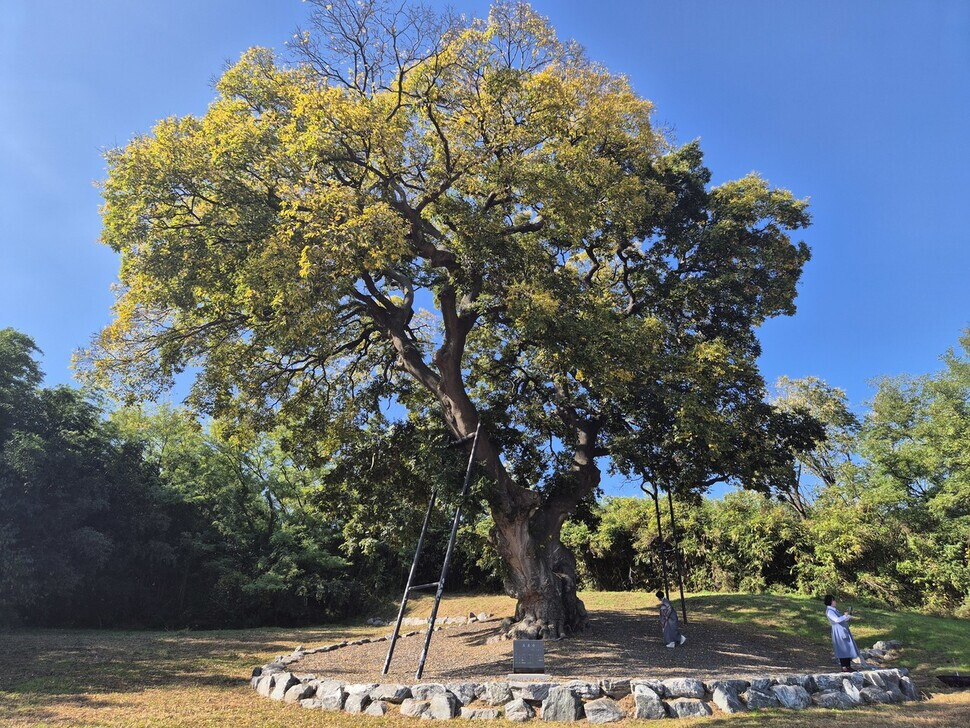
The 541-year-old mulberry tree in Haje Village, Gunsan, has been officially designated as a natural monument, recognizing its significant cultural and historical value.
The decision was made by the Cultural Heritage Administration after careful review by the Natural Heritage Committee. The majestic 20-meter-tall tree, which has stood as a guardian of Haje Village for centuries, has been a beloved local landmark and a protected cultural asset at both the city and provincial levels.
Haje Village itself has a poignant history. Due to its proximity to a US military base ammunition depot, as stipulated in the Korea-US Land Partnership Plan, the entire village, including over 644 households and approximately 2,000 residents, was forcibly relocated. The village was subsequently emptied, with only two houses remaining.
Despite the village's desolation, the mulberry tree has remained a symbol of resilience and community. Every fourth Saturday of the month, dozens to hundreds of residents and activists gather to protect and preserve the ancient tree.
The "팽팽 Cultural Festival Organizing Committee," formed in 2020 to protect the mulberry tree, has welcomed the designation as a natural monument. The committee emphasized that this achievement is a direct result of the active efforts of the citizens of Gunsan and those dedicated to preserving the tree.
A spokesperson for Gunsan City expressed gratitude for the community's dedication and pledged to continue efforts to protect and preserve the natural heritage.
The designation of the mulberry tree as a natural monument not only recognizes its unique historical and ecological value but also highlights the power of community engagement in preserving cultural heritage.
[Copyright (c) Global Economic Times. All Rights Reserved.]






























